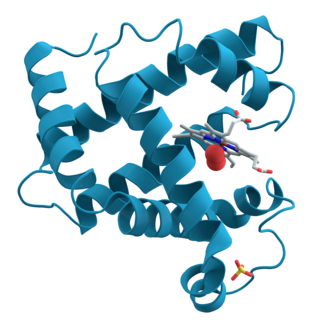Preprotachykinin-1, (abbreviated PPT-1, PPT-I, or PPT-A), is a precursor protein that in humans is encoded by the TAC1 gene. [5] [6]
Preprotachykinin-1, (abbreviated PPT-1, PPT-I, or PPT-A), is a precursor protein that in humans is encoded by the TAC1 gene. [5] [6]
The protein has four isoforms—alpha-, beta-, gamma-, and delta-PPT—which can variably undergo post-translational modification to produce neurokinin A (formerly known as substance K) and substance P. [7] [8] Alpha- and delta-PPT can only be modified to substance P, whereas beta- and gamma-PPT can produce both substance P and neurokinin A. [9]
Neurokinin A can also be further modified to produce neuropeptide K (also known as neurokinin K) and neuropeptide gamma. [10]
These hormones are thought to function as neurotransmitters which interact with nerve receptors and smooth muscle cells. They are known to induce behavioral responses and function as vasodilators and secretagogues. Alternative splicing of exons 4 and/or 6 produces four known products of undetermined significance. [6]
The nature and distribution of PPT-1 has been studied in the human basal ganglia. The protein is expressed evenly throughout the caudate and putamen, and 80 to 85% of it exists in the beta-PPT isoform. 15-20% of the protein is in the gamma-PPT isoform, while no alpha-PPT was detected at all. [8]
In humans, beta-PPT is the dominant isoform in the brain, which contrasts with rats (predominantly gamma-PPT) and cows (alpha-PPT). [8]
While both human and rat PPT-1 produce substance P and neurokinin A, humans produce more neuropeptide K, whereas rats produce more neuropeptide gamma. In cow brains, PPT-1 primarily encodes substance P, but not other neurokinin A-derived peptides. [8]

Substance P (SP) is an undecapeptide and a member of the tachykinin neuropeptide family. It is a neuropeptide, acting as a neurotransmitter and as a neuromodulator. Substance P and its closely related neurokinin A (NKA) are produced from a polyprotein precursor after differential splicing of the preprotachykinin A gene. The deduced amino acid sequence of substance P is as follows:

Biochemistry is the study of the chemical processes in living organisms. It deals with the structure and function of cellular components such as proteins, carbohydrates, lipids, nucleic acids and other biomolecules.

Tachykinin peptides are one of the largest families of neuropeptides, found from amphibians to mammals. They were so named due to their ability to rapidly induce contraction of gut tissue. The tachykinin family is characterized by a common C-terminal sequence, Phe-X-Gly-Leu-Met-NH2, where X is either an Aromatic or an Aliphatic amino acid. The genes that produce tachykinins encode precursor proteins called preprotachykinins, which are chopped apart into smaller peptides by posttranslational proteolytic processing. The genes also code for multiple splice forms that are made up of different sets of peptides.

Lamina-associated polypeptide 2 (LAP2), isoforms beta/gamma is a protein that in humans is encoded by the TMPO gene. LAP2 is an inner nuclear membrane (INM) protein.
Neurokinin 1 (NK1) antagonists (-pitants) are a novel class of medications that possesses unique antidepressant, anxiolytic, and antiemetic properties. NK-1 antagonists boost the efficacy of 5-HT3 antagonists to prevent nausea and vomiting. The discovery of neurokinin 1 (NK1) receptor antagonists was a turning point in the prevention of nausea and vomiting associated with cancer chemotherapy.
Preprotachykinins are precursor proteins that are modified into tachykinin peptides. Via alternative splicing and post-translational modifications, preprotachykinins produce multiple peptide neurotransmitters.

Neurokinin A (NKA), formerly known as Substance K, is a neurologically active peptide translated from the pre-protachykinin gene. Neurokinin A has many excitatory effects on mammalian nervous systems and is also influential on the mammalian inflammatory and pain responses.

The tachykinin receptor 1 (TACR1) also known as neurokinin 1 receptor (NK1R) or substance P receptor (SPR) is a G protein coupled receptor found in the central nervous system and peripheral nervous system. The endogenous ligand for this receptor is Substance P, although it has some affinity for other tachykinins. The protein is the product of the TACR1 gene.

CCAAT/enhancer-binding protein beta is a protein that in humans is encoded by the CEBPB gene.

Calcium/calmodulin-dependent protein kinase type II beta chain is an enzyme that in humans is encoded by the CAMK2B gene.

Corticotropin-releasing hormone receptor 2 (CRHR2) is a protein, also known by the IUPHAR-recommended name CRF2, that is encoded by the CRHR2 gene and occurs on the surfaces of some mammalian cells. CRF2 receptors are type 2 G protein-coupled receptors for corticotropin-releasing hormone (CRH) that are resident in the plasma membranes of hormone-sensitive cells. CRH, a peptide of 41 amino acids synthesized in the hypothalamus, is the principal neuroregulator of the hypothalamic-pituitary-adrenal axis, signaling via guanine nucleotide-binding proteins (G proteins) and downstream effectors such as adenylate cyclase. The CRF2 receptor is a multi-pass membrane protein with a transmembrane domain composed of seven helices arranged in a V-shape. CRF2 receptors are activated by two structurally similar peptides, urocortin II, and urocortin III, as well as CRH.

Substance-K receptor is a protein that in humans is encoded by the TACR2 gene.

Tachykinin receptor 3, also known as TACR3, is a protein which in humans is encoded by the TACR3 gene.

Laminin subunit beta-1 is a protein that in humans is encoded by the LAMB1 gene.

Trefoil factor 2 is a protein that in humans is encoded by the TFF2 gene.

5'-AMP-activated protein kinase subunit gamma-1 is an enzyme that in humans is encoded by the PRKAG1 gene.

Tachykinin-3 is a protein that in humans is encoded by the TAC3 gene.

Phosphorylase b kinase regulatory subunit alpha, skeletal muscle isoform is an enzyme that in humans is encoded by the PHKA1 gene. It is the muscle isoform of Phosphorylase kinase (PhK).

Tachykinin-4 is a protein that in humans is encoded by the TAC4 gene.
Neuropeptide K, is a protein encoded by the TAC1 gene. It is an elongated derivative of the N-terminus of neurokinin A as the final post-translational processing product of beta-preprotachykinin.